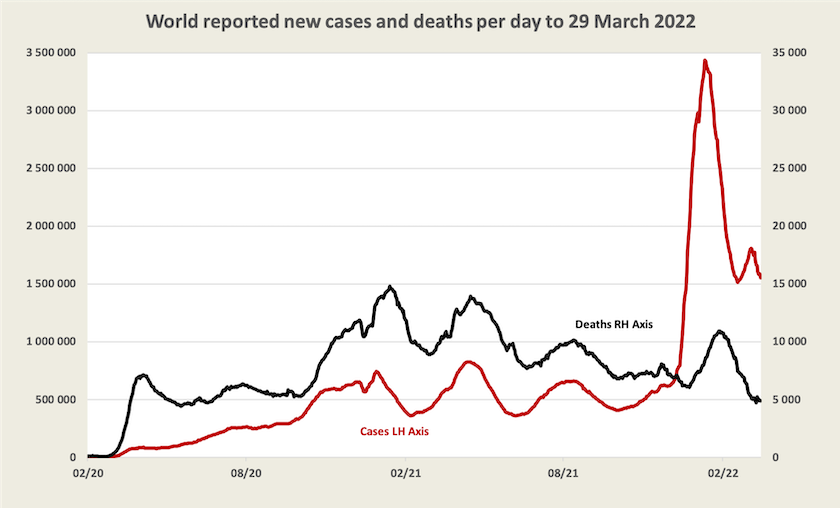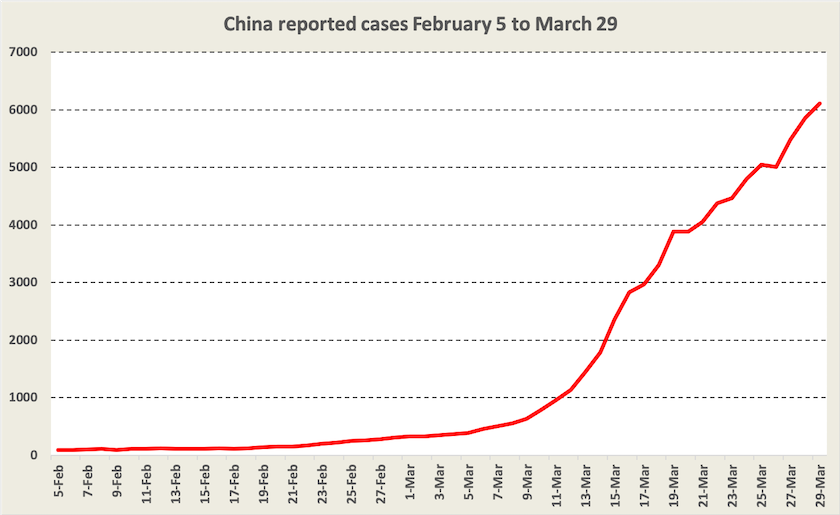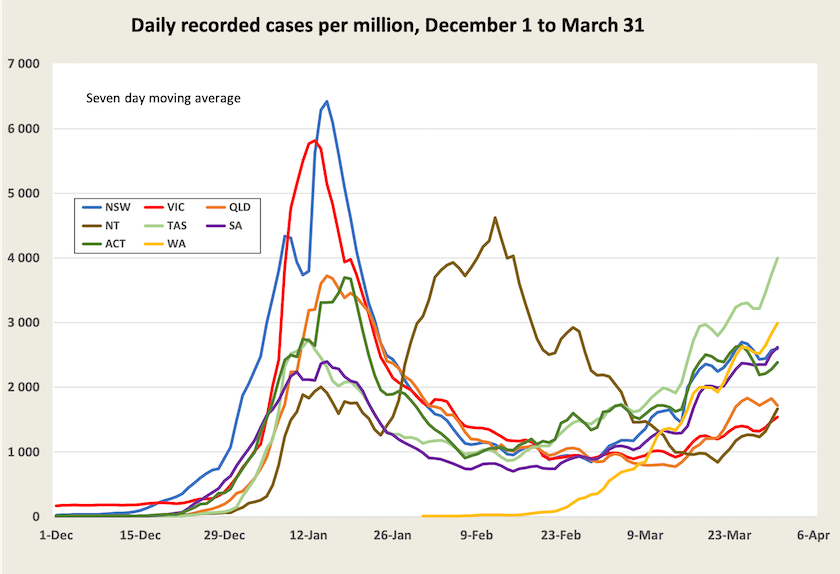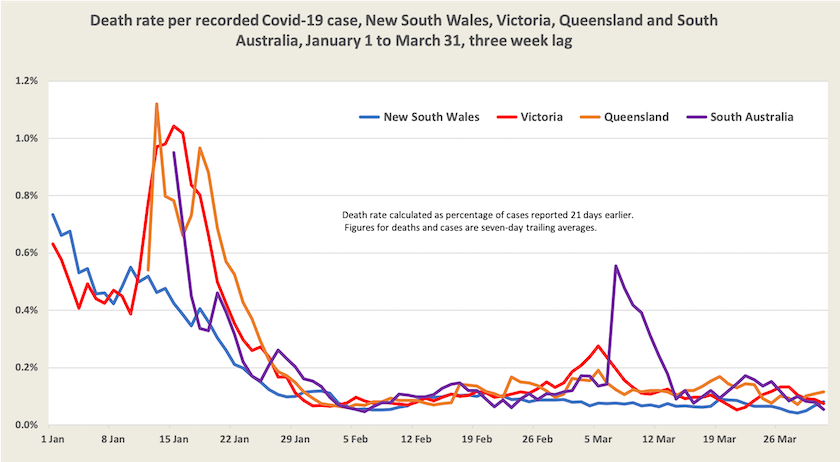The pandemic
Worldwide
After a recent rise, cases are falling.[1][1] This pattern of a sharp rise in January, followed by another rise in March, would be consistent with the Omicron variant appearing in two forms, but with low death rates compared with earlier variants.

The WHO Weekly Epidemiological Update for March 29 reports that recent cases, per 100 000 population, have been highest in western Europe, Australia and Chile.
New variants?
There has been a fair bit of speculation, some of it alarmist, about a recombinant “Deltacron” variant developing. The WHO report linked above, states that “no new evidence indicates that the recombinant variant assigned XD Pango lineage (Delta-Omicron) is associated with higher transmissibility or more severe outcomes”. On the most recent Coronacast – When two variants become one – Norman Swan goes into the biology of recombination. He warns the world about variants emerging in animal-to-human transmissions, from both wild and domestic animals. We need a great deal more research and monitoring of animal viruses. (Opportunistic politicians who try to blame China for its laboratory safety, thereby distracting attention from the influence of wet markets and human-wildlife interactions, don’t help.)
China
For the last couple of weeks I have been including WHO data on China, which, up to last week, appeared to be showing strong exponential growth in cases. This seems to have reverted to a linear model. Perhaps their attempt to confine the outbreak to Shanghai with a hard lockdown is working. If the lockdown were in Tianjin or Guangzhou, China’s manufacturing hubs, the economic consequences could be significant, but will anyone outside Shanghai even notice that one of the world’s financial centres has closed down?

Deaths and inoculations in other countries
Below is a scatter diagram of vaccination and death rates in high-income “developed” countries that I occasionally show on this site. There is much speculation but little hard explanation for Korea’s high death rate, in spite of a high vaccination rate.

Australia, in spite of a comparatively low third-dose vaccination level, is among countries with a low death rate per million population, but that will probably rise in coming weeks as a delayed response to infections in the Omicron BA.2 wave.
1. Even if deaths are reasonably accurately recorded (in some countries deaths are fudged for political reasons) case numbers are generally understated because of under-reporting, under-testing and the presence of asymptomatic cases. The WHO warns that many countries are dropping their testing requirements and therefore reducing the number of cases being detected. ↩
Australia
In Australia cases are once again rising.

A big unknown is how many people have been infected with the two Omicron waves. We have data on reported cases, but there is no easy way to learn how many asymptomatic cases there have been, or how many cases people have not bothered to report.
In New South Wales, where this wave first got a foothold, there have been just on 1.8 million reported cases, about 22 percent of the state’s population. Some experts, including Norman Swan, suggest that the actual number of infections could be five times or more the number of reported cases. A factor of 5, however, is implausible, for it would imply that 110 percent of people in New South Wales have been infected, and there is not strong evidence of people getting multiple infections of Omicron. The fact that infections are spreading quickly (although not as rapidly as in the December-January outbreak), suggests that there are still plenty of people to infect.
Even though there may not be a high risk of severe disease or death, the risk of people having to quarantine themselves and their close associates will continue to put a dampener on personal and business plans.

The number of people in ICU with Covid (not the number of people being admitted to ICU), a reasonably robust indicator of the virus’s load on the health system, is flat for now. But in view of the lag between diagnosis and severe manifestations it would be surprising if it does not rise in he next few weeks.

The death rate per recorded case continues to be around 0.1 percent – 1 in 1000 or even lower – and shows no sign of rising or falling. The bump in South Australia results from their recording 23 cases on one day in early March – almost certainly to do with a lag in recording earlier deaths.